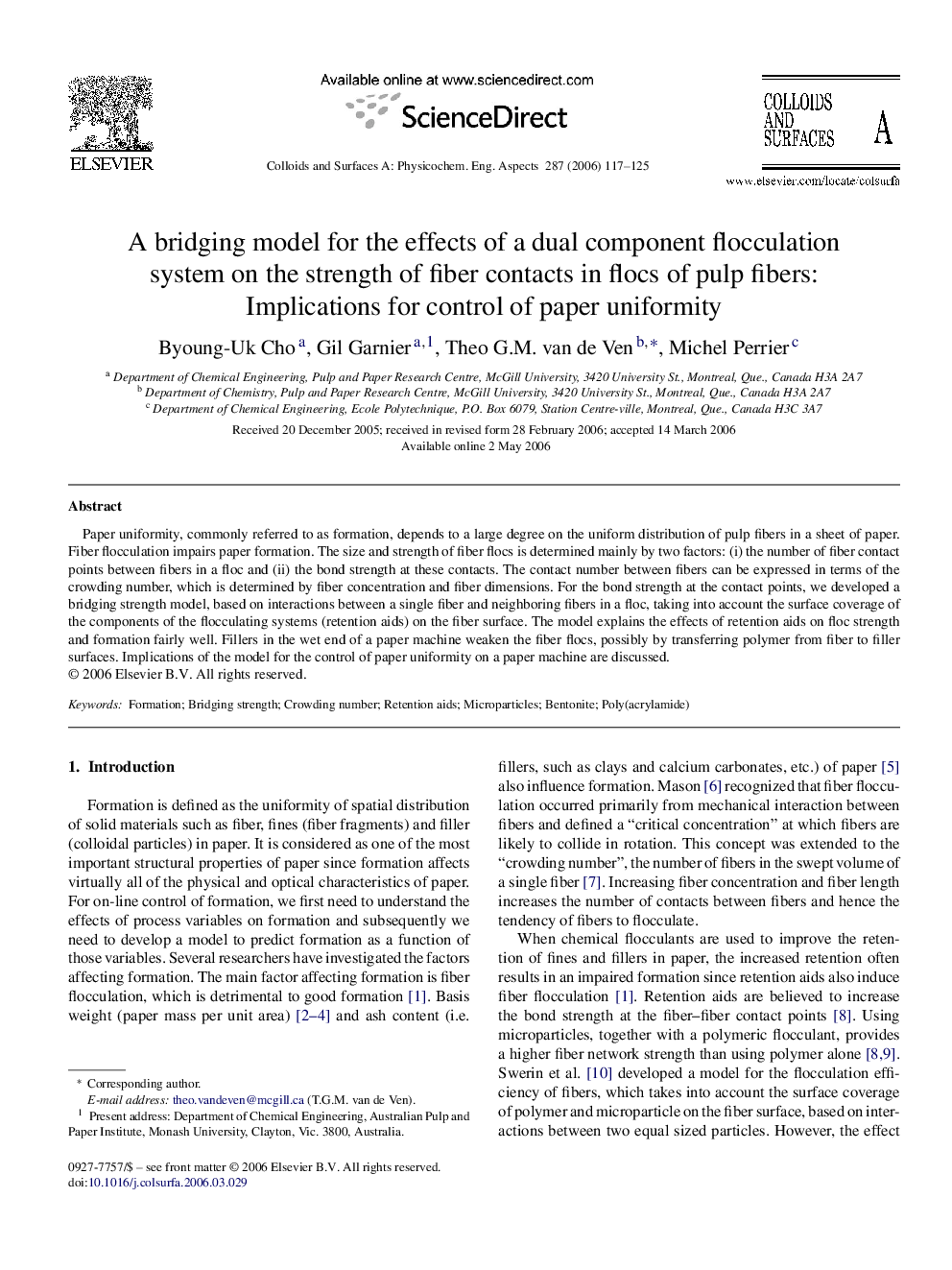| کد مقاله | کد نشریه | سال انتشار | مقاله انگلیسی | نسخه تمام متن |
|---|---|---|---|---|
| 598072 | 1454085 | 2006 | 9 صفحه PDF | دانلود رایگان |

Paper uniformity, commonly referred to as formation, depends to a large degree on the uniform distribution of pulp fibers in a sheet of paper. Fiber flocculation impairs paper formation. The size and strength of fiber flocs is determined mainly by two factors: (i) the number of fiber contact points between fibers in a floc and (ii) the bond strength at these contacts. The contact number between fibers can be expressed in terms of the crowding number, which is determined by fiber concentration and fiber dimensions. For the bond strength at the contact points, we developed a bridging strength model, based on interactions between a single fiber and neighboring fibers in a floc, taking into account the surface coverage of the components of the flocculating systems (retention aids) on the fiber surface. The model explains the effects of retention aids on floc strength and formation fairly well. Fillers in the wet end of a paper machine weaken the fiber flocs, possibly by transferring polymer from fiber to filler surfaces. Implications of the model for the control of paper uniformity on a paper machine are discussed.
Journal: Colloids and Surfaces A: Physicochemical and Engineering Aspects - Volume 287, Issues 1–3, 15 September 2006, Pages 117–125